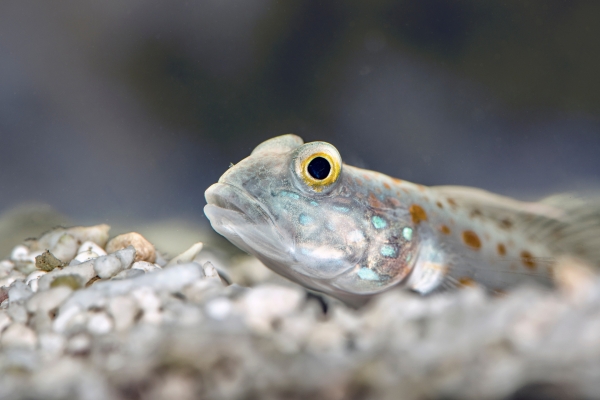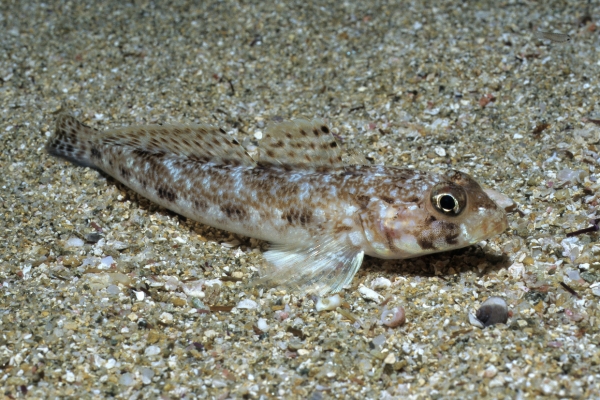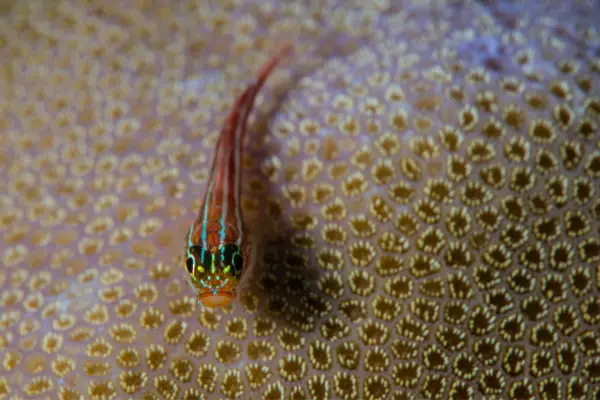Stout Infantfish and Dwarf Gobies
Our oceans and rivers are home to a stunning diversity of fish species. Ranging from the mighty whale shark that can grow over 40 feet long to minuscule fish smaller than your little fingernail. Of the 34,000 known species of fish on Earth, the stout infant fish and dwarf gobies hold the titles as the smallest.
Understanding what makes these tiny fish unique not only satisfies our curiosity about the extremes of nature. But it also allows us to better appreciate and conserve fish biodiversity.
In this blog article, we’ll cover key facts about stout infant fish and dwarf gobies – the world’s tiniest vertebrates.
Stout Infantfish – Schindleria brevipinguis
In the early 1970s, ichthyologists were studying coral reefs in the South Pacific. Among their samples, they discovered tiny see-through fish just 8.4 mm long as adults. This new species received the apt name Schindleria brevipinguis, reflecting the stout body and short fins that distinguish it.
Today, the stout infantfish retains the crown as the smallest known fish and vertebrate in the world.

Key Facts and Features:
- Average Adult Length: 8.4 mm (0.33 inches)
- Record Size: 10 mm (0.4 inches)
- Habitat: Coral reefs of the South Pacific and Indian Oceans
- Diet: Plankton and small crustaceans
- Lifespan: A few months
- A transparent body allows internal organs to be seen
- Indeterminate growth – continues growing entire life unlike related species
The diminutive stout infantfish lives among the intricate labyrinth of coral heads and crevices lining tropical reefs. Its miniature size enables it to duck in and out of even the tiniest nooks. Safe from predators in these tiny shelter tunnels.
True to its name “infantfish”, individual S. brevipinguis indeed resemble baby fish. They have full-sized and well-developed eyes and internal organs despite severely truncated bodies. This petite fish even has a disproportionally large brain occupying much of its headspace.
What makes this possible is that the stout infantfish skeleton largely consists of cartilaginous tissue versus hardened bone. This reduces overall mass while still providing a basic supportive structure.
Dwarf Gobies – Trimmatom nanus and Pandaka pygmaea
While the stout infant fish ranks as the single smallest, two species of dwarf gobies tie for second place as vertebrates with the smallest known average length. Let’s meet our mini runners-up:
Trimmatom nanus
- Average Length: 9.0 – 10.0 mm (0.35 – 0.39 inches)
- Maximum Size: 16 mm (0.63 inches)
- Habitat: Coral reefs in the Indian and Pacific Oceans
Pandaka pygmaea
- Average Length: 10.0 mm (0.4 inches)
- Maximum Size: 16 mm (0.63 inches)
- Habitat: Coastal waters of the Philippines
Like the aptly named stout infantfish, these dwarf gobies are tiny enough to be mistaken for babies of their kind. But they are, in fact, fully mature adults of their diminishuative species.
What’s surprising about several dwarf goby species is that the males provide all parental care after mating. This includes Pandaka pygmaea males that carry freshly laid eggs in their small mouths until hatching. They then continue safeguarding the fry. That seems like a lot to balance for an aquarium pet-sized fish!

Reasons Why These Tiny Fish Stay So Small
What environmental and genetic factors allow stout infantfish and dwarf gobies to remain under 0.5 inches long as adults? Let’s review key influences:
- Slowed Growth and Development. Indeterminate growth patterns enable continued size increases unlike their relatives
- Genetic and Hormonal Regulation. Key genes and developmental pathways control overall body shape
- Limited Nutrition. The Plankton diet provides minimal calories needed for rapid growth
- Predation Pressures. Staying transparent and tiny reduces the risks to survive
Scientists continue studying precisely what genetic mechanisms regulate miniaturization in these fish. But certain hormonal pathways related to growth plate closure likely play key roles. Their transparent bodies probably evolved as camouflage to better avoid hungry predators.
Interestingly, eggs and larvae of dwarf gobies and stout infantfish are normal-sized. It’s only later in development that their maturation is slowed and size reduction kicks in. This indicates strong environmental components fine-tuning their genetic growth limits.
Threats Facing Earth’s Tiniest Vertebrates
As appealing as tiny fish may be, the stout infantfish and dwarf gobies face substantial threats to their future survival:
- Habitat Destruction. Dynamite fishing, pollution, warming reefs, human activities
- Overcollecting. Popular aquarium fish targeted by collectors
- Competition and Predation. Outcompeted by invasive fish, overhunting by larger aquatic life
Coral reefs provide essential habitat, nutrition sources, and protection for stout infantfish and dwarf gobies. Reef biodiversity hotspots are being rapidly degraded by:
- Coral Bleaching from Warming Oceans
- Destructive Fishing Practices Like Cyanide Poisoning
- Marine Pollution such as Plastics and Chemical Contaminants
Targeted conservation efforts for coral reefs and small tropical fish are crucial to ensure future generations can continue appreciating Earth’s tiniest fish. It may be easy to overlook these miniature marvels, but size isn’t everything.
Now that you know key attributes of stout infant fish and dwarf gobies, keep an eye out for mentions of new contenders for smallest vertebrate status. For it seems inevitable that hidden in remote tropic seas, even tinier fish have yet to be discovered!
FAQs:
- What is the smallest fish in the world?
The smallest fish is the stout infantfish (Schindleria brevipinguis), which averages just 8.4 mm (0.33 inches) long as an adult. The record size is 10 mm (0.4 inches).
- Where are stout infantfish found?
Stout infantfish are found in coral reefs in the South Pacific and Indian Oceans, usually hiding in tiny crevices and holes.
- Why is the stout infantfish so small?
The stout infantfish stays miniature due to slowed growth patterns, genetic regulation of its body shape, limited nutrition from its plankton diet, and predation pressures. Its skeleton is also largely cartilaginous rather than bone.
- What is the second smallest fish species?
The dwarf goby species Trimmatom nanus and Pandaka pygmaea tie for second place, averaging lengths between 9-10 mm (0.35-0.39 inches).
- How do dwarf gobies reproduce?
Surprisingly, male dwarf gobies like Pandaka pygmaea provide all the parental care. They carry eggs in their mouths until hatching, then guard the tiny fry.
- Why are these tiny fish threatened?
Habitat loss, overcollecting for the aquarium trade, climate change impacts like coral bleaching, pollution, and competition from invasive species are major threats facing stout infantfish and dwarf gobies.
- Could there be even smaller fish species?
It’s quite possible undiscovered fish species existing in remote coral reefs may be even smaller than the current record holders. The quest to find Earth’s tiniest vertebrates continues!
- Are the smallest fish babies or adults?
The diminutive stout infantfish, dwarf gobies, and other tiny coral reef fish are fully mature, functioning adults – not babies or juveniles. Their genetic limits and environmental factors result in extreme miniaturization.


